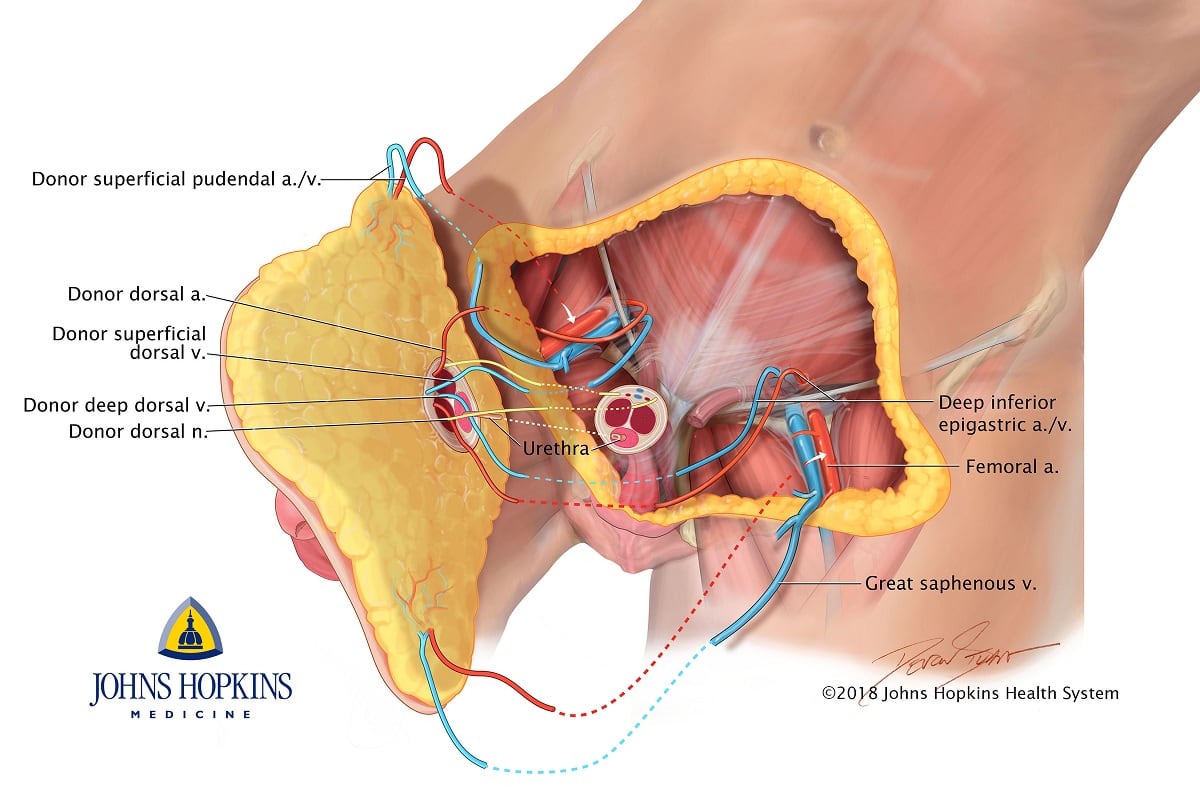It’s been a little over a year and a half since Ray underwent the most important medical procedure of his life, a one-of-a-kind surgery he hoped would remedy catastrophic injuries he sustained eight years earlier.
The former Navy corpsman — he wished to remain anonymous — was on patrol in Afghanistan in 2010 when his team encountered a Taliban ambush that immediately inflicted heavy casualties. Ray leapt into action, scrambling toward a wounded Marine through a barrage of enemy fire.
Then, in a flash, he was hurtling through the air.
“I remember everything froze and I was upside down,” he told the MIT Technology Review. “I remember thinking ... ‘This isn’t good.’ And then I was on my back.”
The blast from the roadside bomb triggered by the pressure of Ray’s boot would have undoubtedly killed personnel in conflicts when flimsy or nonexistent protective equipment did little to enhance survivability.
Ray’s gear kept him alive — barely.
Both of his legs were severed above the knee, injuries he would eventually learn to cope with through the use of prosthetics.
But Ray would leave much more than his legs behind in the dirt of Afghanistan.
The explosion ripped apart his midsection, severing his penis, scrotum, and a section of his abdominal wall.
In time, relief of having survived the catastrophic maiming dissolved into despair, with thoughts of living with such extensive disabilities prompting suicidal ideations.
“There were times you’d be hanging out and guys would be talking about getting hurt, and that’s one of the first things when they get blown up, to check down there, and they would say things like, ‘If I lost mine I’d just kill myself,’” he told the New York Times in an interview last year.
“When I would actually think about killing myself, I would think, ‘Am I really just gonna kill myself over a penis?’”
This recollection was echoed by Army Lt. Col. Timothy Tausch, the director of trauma and male reconstructive urology at Walter Reed National Military Medical Center.
“As soon as they wake up, they’re not asking about where their legs are,” he told the MIT Review. “They’re asking where the testicles and the penis are. You can’t put a number on how significantly this affects one of these wounded warriors’ lives.”
At the recommendation of his urologist at Walter Reed, Ray entered into discussion with medical professionals to explore what options existed for someone with his affliction.
It was during this time in 2013 that Ray met Richard Redett, a plastic surgeon at Johns Hopkins Hospital in Baltimore who specializes in genital reconstruction.
Redett was quick to recommend Ray undergo a phalloplasty, a procedure that, according to the MIT Technology Review, involves “a rolled tube of tissue, blood vessels, and nerves taken from the forearm or thigh and transplanted to the groin, an ersatz penis that needs an external pump to get erect.”
But Redett’s soon had a change of heart, and the surgeon opted instead to list Ray as a candidate for the first full penis and scrotum transplant ever performed on a military veteran.
“This was actually something that could fix me,” Ray told the MIT Review.
“I could go back to being normal again.”
Ray got the call to report to the hospital in March 2018. A recently deceased match had been found, an improbability that required a donor of similar age, color, and size.
First, transport of the graft had to be arranged in a way that ensured the tissue would survive a flight back to Maryland.
A single section was cut from the donor’s lower abdomen containing skin, muscles, tendons, bone, blood vessels and nerves. Transported on ice, the section measured 10 inches by 11 inches and weighed about five pounds, the New York Times reported.

When the graft arrived at Johns Hopkins, nine plastic surgeons and two urological surgeons got to work.
“We felt very confident we could do it, but we had never done it,” Redett told the MIT Review. “If you’re not anxious for something like that, you’re not thinking hard enough."
Redett and his team completed the full transplant after a meticulous 14-hour procedure. At one point, up to 25 people were in the operating room.
The operation, which was estimated to cost between $300,000 and $400,000, was funded by Johns Hopkins, with each of the surgeons performing the procedure for free.
Two days would go by, the report said, until Ray could see the surgical result.
“In the back of your mind, you know this is a transplant, and you wonder if it’s going to be too much for you to handle," he told the MIT Review. "Once I went through with the surgery, all of those concerns just went away.
“It was one of the best decisions I ever made.”
His quality of life has improved dramatically since the procedure, the report said, with Ray placing a renewed emphasis on physical fitness and a blossoming social life.
Functionally speaking, Ray can now urinate standing up. And while he’ll remain unable to father children due to the destruction of his own reproductive tissue, male enhancement medications like Testosterone and Cialis have made it possible for him to achieve erectile function.
“He told me, which was the best news I could hear, that it feels normal,” Redett told the MIT Review.
According to the report, 1,367 American service members have suffered genital injuries during the wars in Iraq and Afghanistan. Over 500 of those have been determined to be so severe that their only remedy may be the same procedure performed on Ray, of which only four total have ever been done.
J.D. Simkins is the executive editor of Military Times and Defense News, and a Marine Corps veteran of the Iraq War.




